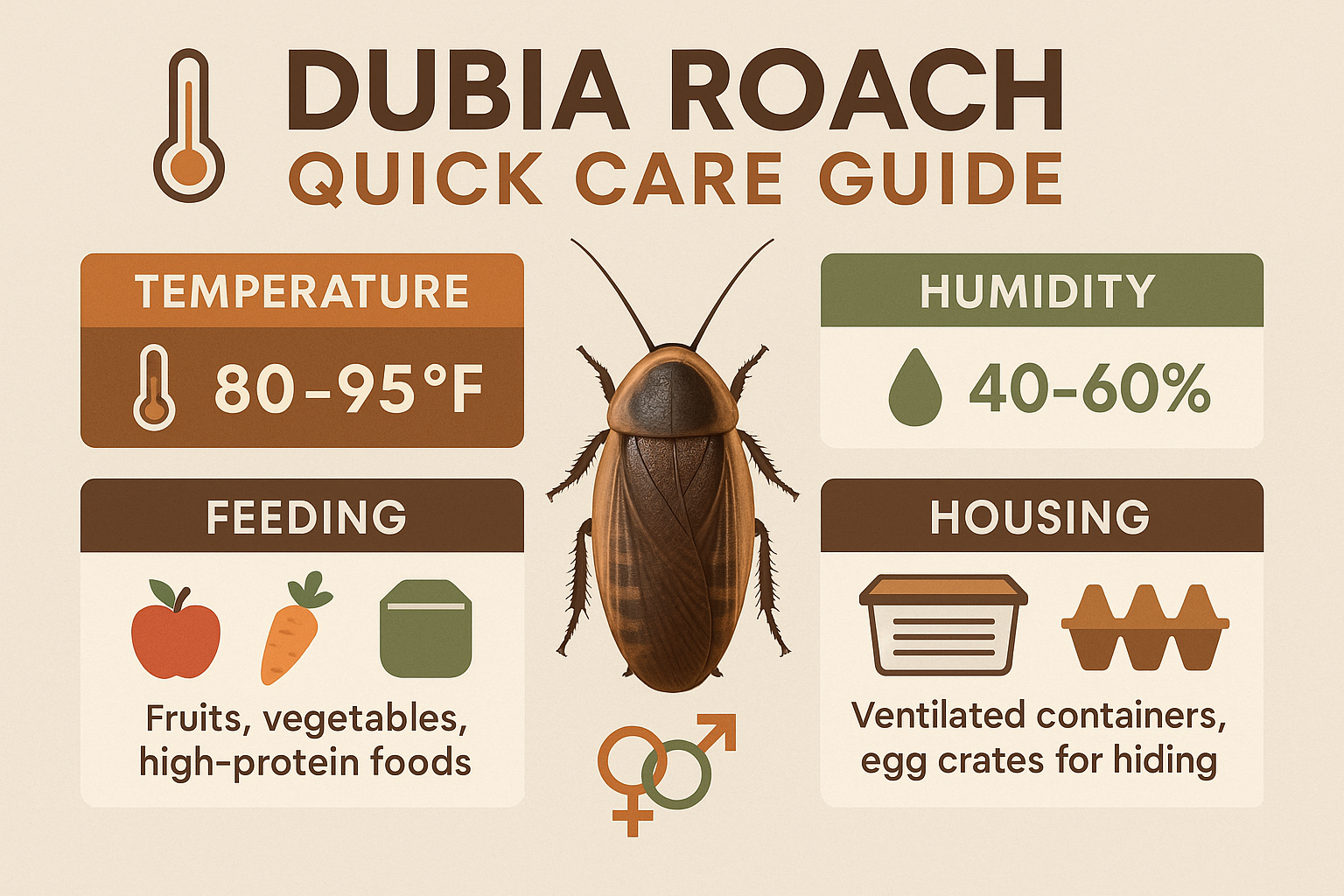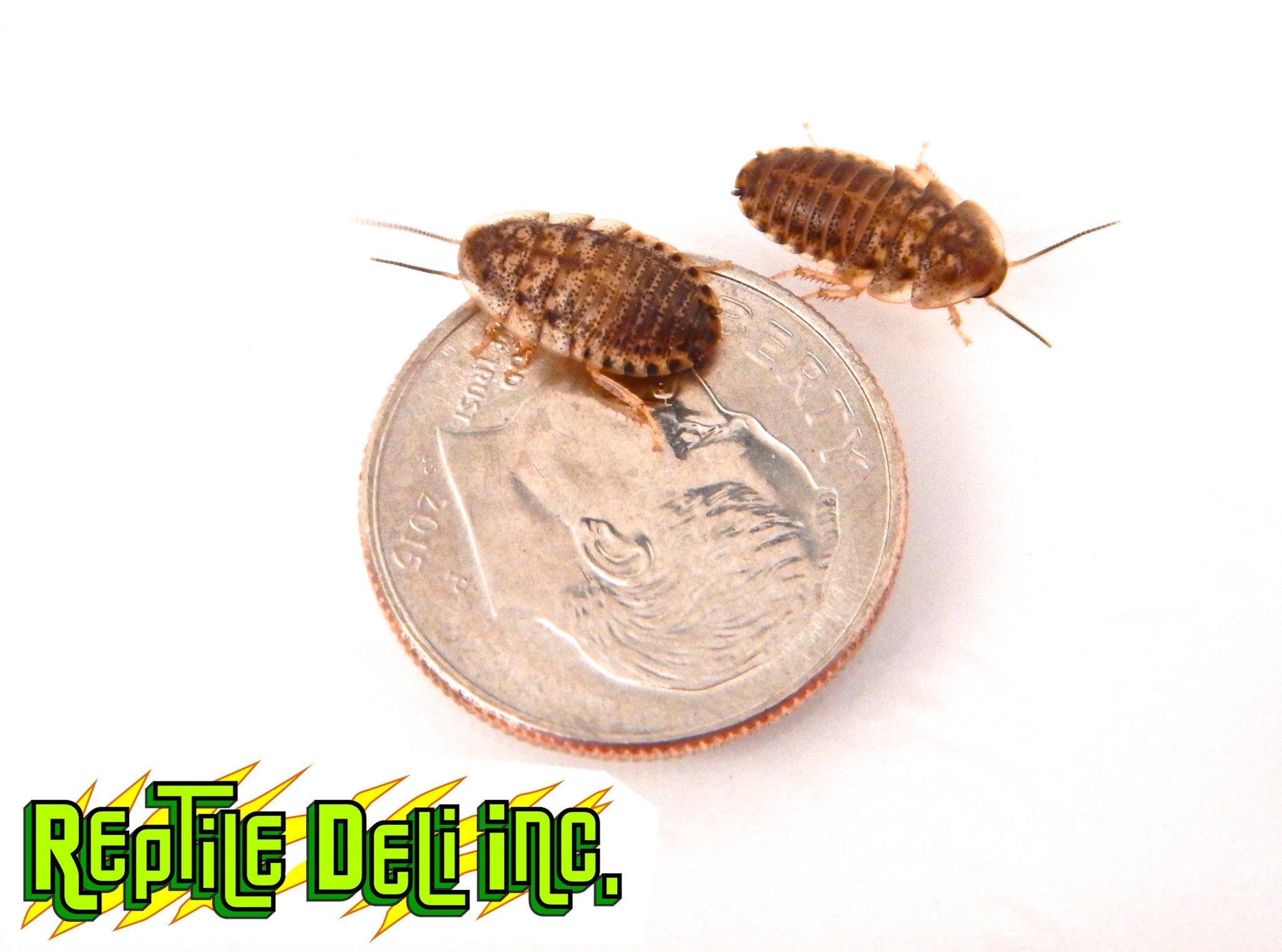How to Care for Dubia Roaches
A comprehensive care guide is essential for keeping dubia roaches (Blaptica dubia) healthy, whether you're maintaining a small batch as a temporary food source or establishing a thriving colony for your reptiles. This guide, tailored for Reptile Deli dubia roaches, will walk you through the key aspects of husbandry, from housing to feeding.
Why Choose Dubia Roaches?
Dubia roaches are a highly sought-after feeder insect for several reasons. They are:
- Nutritious: Rich in protein and low in fat, making them an excellent dietary staple for most reptiles.
- Easy to Care For: They don't require much space, are quiet, and have a long lifespan.
- Odorless: Unlike crickets, they don't produce a strong, offensive smell, as long as their enclosure is kept clean and dry.
- Cannot Climb or Fly: Adult males have wings, but they are not functional for flight, and females have only wing stubs. This makes them easy to contain.
- Nocturnal and Docile: They are not prone to biting and are easy to handle.
Dubia Roach Enclosure Setup
Creating the right habitat is the first step to successful dubia roach care.
- Container: A smooth-sided plastic tub or a glass aquarium is ideal. The smooth surface prevents the roaches from climbing out. A 10-gallon aquarium or a 40-quart plastic tub is a good starting point, but the size should be scaled to the number of roaches you have.
- Ventilation: Proper airflow is crucial to prevent mold and bacteria buildup. Cut large holes in the lid and cover them with a fine-mesh screen or metal mesh. This provides ventilation while keeping the roaches in and pests out.
- Hiding Spots: Dubia roaches are nocturnal and prefer dark, crowded spaces. Cardboard egg crates are the industry standard and provide ample surface area for the roaches to hide and climb. Stack the egg crates vertically to allow droppings (frass) to fall to the bottom of the enclosure, making cleaning easier.
Environmental Conditions: Temperature & Humidity
Maintaining the correct temperature and humidity is key for your dubia roach colony.
- Temperature: While dubia roaches can survive at room temperature, they thrive and reproduce best in warmer conditions. The optimal temperature for breeding is between 85°F and 95°F (29.4∘C to 35∘C). If you're simply keeping a small batch as feeders to slow their growth and prevent them from outgrowing your pet, a temperature between 50°F and 70°F (10∘C to 21.1∘C) is sufficient.
- Heat Source: An under-tank heater (UTH), a heat cable, or a ceramic heat emitter (CHE) can be used to provide heat. A UTH is often the easiest and safest method. Always use a thermostat to regulate the temperature and prevent overheating. Place the heat source on the side or bottom of the enclosure.
- Humidity: Dubia roaches prefer a humidity level of around 40% to 60%. High humidity (above 70%) can lead to mold growth, which is lethal to the colony. Misting is generally not recommended as it can get the frass wet, leading to bacterial growth and an ammonia smell. The humidity from their food source and a dedicated water source should be sufficient.
Feeding and Gut Loading
Gut-loading is the process of providing your dubia roaches with a high-quality, nutritious diet before feeding them to your reptile. This transfers the nutrients to your pet, ensuring a healthier meal.
- Food: Dubia roaches are omnivores and will eat a wide variety of foods.
- Dry Food: A commercial roach chow or gut-load is an excellent staple. Avoid using high-protein foods like cat or dog food, as excess protein can lead to uric acid buildup in the roaches, which can be harmful to your reptile.
- Fresh Fruits and Vegetables: Provide moisture and essential vitamins. Some excellent options include carrots, sweet potatoes, yams, apples, bananas, leafy greens, and various squashes. Always wash fresh produce thoroughly to remove any pesticides.
- Water: Never use a dish of standing water, as the roaches will drown. The safest and most effective method is using water crystals (also known as water gel). You can also use moisture-rich foods like cucumber slices or orange slices to provide hydration.
- Feeding Schedule: Place food in a shallow dish to prevent it from getting mixed in with the frass. Feed them once every 24-48 hours, removing any uneaten food after this period to prevent mold.
Maintenance and Cleaning
Proper hygiene is critical for a healthy dubia roach colony.
- Spot Cleaning: Regularly remove uneaten food to prevent mold growth.
- Deep Cleaning: The "frass" (a mix of droppings and shed exoskeletons) at the bottom of the enclosure should be cleaned out periodically. For a breeding colony, it's generally best to leave the frass alone unless it gets wet or starts to smell. Some people add "cleaner crews" like isopods or springtails to help break down the waste.
- Handling: When cleaning the enclosure or retrieving roaches for feeding, wear gloves to prevent a potential allergic reaction. Place the roaches in a separate container while you clean the main enclosure.
By following this detailed care guide, you'll be able to maintain a healthy and vibrant supply of Reptile Deli dubia roaches, ensuring your reptile receives the best possible nutrition.


